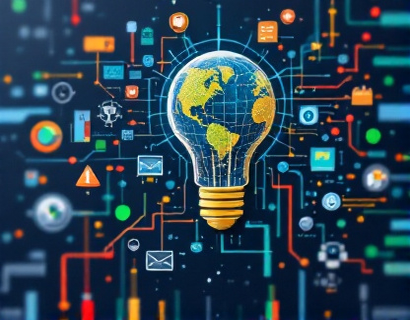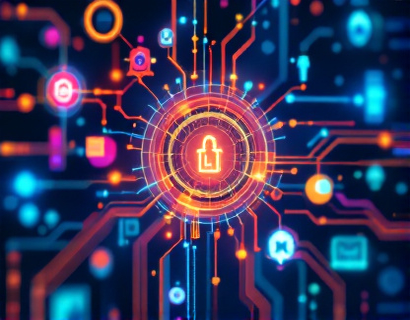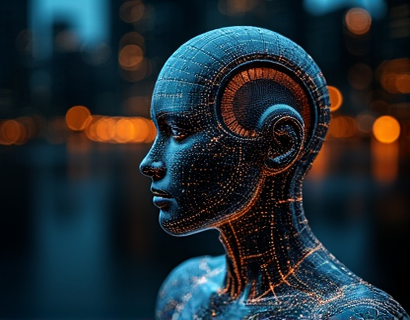Empowering Young Minds: The Role of AI-Powered Educational Chatbots in Providing Safe and Verified Industry Insights
In the rapidly evolving landscape of education, the integration of artificial intelligence (AI) has opened new avenues for learning and knowledge acquisition. Among these innovations, AI-powered educational chatbots stand out as a transformative tool, especially for children and students seeking specialized industry insights and workshop knowledge. These chatbots offer a secure and verified platform, ensuring that the content provided is not only informative but also safe for young users. This article delves into the significance of such chatbots, their functionalities, and the benefits they bring to the educational sector.
Understanding AI-Powered Educational Chatbots
AI-powered educational chatbots are sophisticated software applications designed to simulate conversation with human users through natural language processing (NLP) and machine learning algorithms. These chatbots are programmed to understand and respond to user queries in a conversational manner, providing tailored information and guidance. In the context of education, these chatbots serve as virtual mentors, offering access to a wealth of knowledge across various subjects and industries.
Ensuring Safety and Verification
A critical aspect of these chatbots is the emphasis on safety and content verification. Educational platforms must ensure that the information provided to children and students is accurate, up-to-date, and free from harmful or inappropriate content. To achieve this, the chatbots are equipped with advanced filtering mechanisms and are regularly updated by a team of educators and industry experts. This dual approach guarantees that the content remains both educational and safe, fostering a trustworthy learning environment.
Access to Specialized Industry Insights
One of the primary benefits of AI-powered educational chatbots is their ability to provide specialized industry insights. Students and children can engage with these chatbots to learn about various professions, industry trends, and technological advancements. For instance, a student interested in robotics can ask the chatbot about the latest developments in robotic surgery or autonomous vehicles. The chatbot can then provide detailed explanations, backed by recent research and industry reports, offering a comprehensive understanding of the topic.
Interactive Learning Experience
The interactive nature of chatbots enhances the learning experience by making it more engaging and personalized. Unlike traditional educational resources, chatbots can adapt to the user's pace and level of understanding. They can offer additional explanations, examples, or even interactive quizzes to reinforce learning. This dynamic interaction not only keeps students engaged but also helps in better retention of information.
Workshop Knowledge and Services
AI chatbots can serve as a gateway to understanding workshop services and the broader industry context. For example, a student curious about coding workshops can ask the chatbot about different types of coding languages, the skills required, and the benefits of participating in coding workshops. The chatbot can provide a structured overview, including the curriculum, duration, and even testimonials from past participants. This comprehensive information helps students make informed decisions about their educational pursuits.
Child-Friendly Interface
Recognizing the unique needs of young learners, these chatbots are designed with a child-friendly interface. The language used is simple and accessible, avoiding jargon and complex concepts that might confuse children. Visual elements such as images, icons, and even emojis are incorporated to make the interaction more appealing and understandable. This approach ensures that even younger students can navigate the chatbot with ease, fostering a positive learning experience.
Parental and Educational Institution Involvement
The involvement of parents and educational institutions is crucial in maximizing the benefits of AI-powered educational chatbots. These stakeholders can monitor the chatbot's activities, ensuring that the content aligns with educational goals and values. Additionally, educators can integrate chatbot interactions into their teaching plans, using the insights and resources provided to enhance classroom discussions and projects. This collaborative approach creates a holistic educational ecosystem.
Continuous Improvement and Feedback Mechanisms
To maintain the quality and relevance of the content provided by AI chatbots, continuous improvement and feedback mechanisms are essential. Users, including students and educators, are encouraged to provide feedback on the chatbot's performance and the accuracy of the information given. This feedback is then used to refine the chatbot's algorithms and update the content base. Regular audits and updates ensure that the chatbot remains a reliable and valuable resource.
Enhancing Critical Thinking and Problem-Solving Skills
Beyond providing information, AI chatbots can play a significant role in developing critical thinking and problem-solving skills among students. By engaging in conversations that require analysis and synthesis of information, students learn to think critically and approach problems methodically. For example, a chatbot might present a real-world scenario related to environmental science and ask students to propose solutions. This interactive problem-solving process not only educates but also nurtures essential skills for the future.
Supporting Diverse Learning Styles
Every student has a unique learning style, and AI chatbots are well-equipped to cater to this diversity. Whether a student is a visual learner who benefits from diagrams and videos, an auditory learner who prefers explanations and discussions, or a kinesthetic learner who learns by doing, the chatbot can adapt its responses to suit different learning preferences. This flexibility ensures that all students can engage with the content in a way that best suits their individual needs.
Building Confidence and Independence
As students interact with AI chatbots, they gain confidence in their ability to seek and understand complex information independently. The chatbot acts as a supportive guide, encouraging students to explore topics deeply and ask questions without fear of judgment. This empowerment is crucial in fostering a lifelong love for learning and a sense of autonomy in educational pursuits.
Conclusion
AI-powered educational chatbots represent a significant advancement in the way we approach learning, especially for children and students. By providing a safe, verified, and interactive platform for accessing industry insights and workshop knowledge, these chatbots enhance the educational experience. They not only deliver valuable information but also develop essential skills and build confidence. As technology continues to evolve, the role of AI in education will only become more prominent, offering endless possibilities for innovative and effective learning solutions.









































